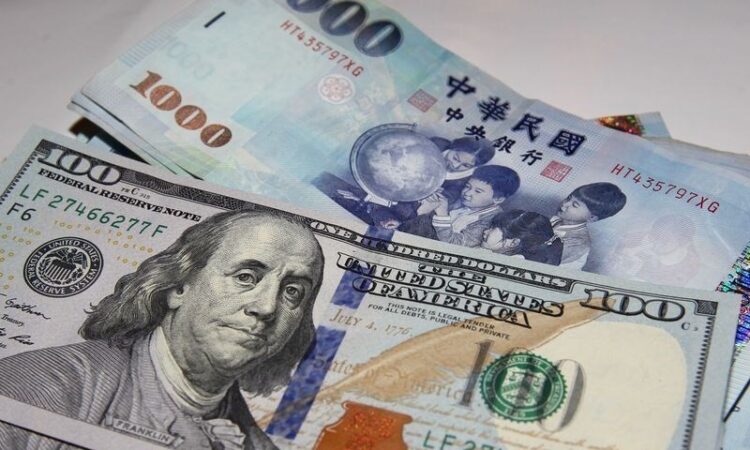
Taipei, Dec. 31 (CNA) The Taiwan dollar plunged almost 10 percent against the U.S. dollar in 2022, the steepest decline in 25 years, as the greenback was bolstered by aggressive interest rake hikes by the United States Federal Reserve.
The Taiwan dollar closed at NT$30.708 against the U.S. dollar on Friday, the last trading session of the year, down NT$3.018, or 9.83 percent, for the year.
That was the local currency’s steepest drop against the U.S. dollar since 1997, when it tumbled NT$5.147, or 15.77 percent, to end at NT$32.638.
On the back of Taiwan’s strong exports and sound economic fundamentals, the Taiwan dollar extended its momentum from 2021, when the currency rose 2.95 percent against the U.S. dollar, into early 2022 to hit a closing high of NT$27.607 on Jan. 17.
The greenback rallied after that, however, helped by expectations of sustained interest hikes by the Fed, and it rose to its closing high for the year against the Taiwan dollar at NT$32.245 on Nov. 2.
Chen Yu-chung (陳有忠), chief currency strategist of Taishin International Bank, said it was rare for the Taiwan dollar to fall more than NT$4 against the U.S. dollar within one year, as it did from NT$27.690 at the end of 2021 to the Nov. 2 closing level.
Chen said the volatility partly came from a hawkish Fed, whose interest rate hikes to stem inflation led to a stronger dollar and a fund outflow from Asia, hurting the Taiwan dollar, the Japanese yen, the Chinese yuan, and the South Korean won.
The Taiwan dollar’s fall was steeper than the yuan’s 8.25 percent fall and the won’s 5.99 percent drop, but smaller than the yen’s 12.87 percent decline in 2022.
Dealers said the fund outflow also sent the Taiex, the Taiwan Stock Exchange’s benchmark index, plunging 22.4 percent in 2022, which put pressure on the Taiwan dollar.
Other factors hurting the Taiwan dollar, Chen said, were geopolitical risks caused by Russia’s invasion of Ukraine, North Korea’s missile testing, and escalating tensions across the Taiwan Strait.
The local currency showed signs of stabilizing after November, however, pulling back some of its losses against the U.S. dollar by the end of the year.
The rebound, which was also seen in the local stock market, came as investors anticipated that the Fed would slow its pace of rate hikes as inflation pressures seemed to ease and fears of a recession grew.
At a policymaking meeting in December, the Fed raised its key interest rates by 50 basis points, a smaller hike than the 75-basis point increases seen after each of its four previous meetings.
Since March, the American central bank has raised interest rates by 425 basis points.
“To the Taiwan dollar, the landmine of a strong U.S. dollar has been removed. As the Fed’s rate hike cycle comes to an end in 2023, the Taiwan dollar is expected to stay stable and will likely rebound,” Chen said.
The room for the Taiwan dollar to appreciate will be limited, however, as Taiwan is expected to continue to face cross-Taiwan Strait tensions, which could keep foreign institutional investors from buying into the local currency.
The local currency could also be held back by the impact of weakening global demand on Taiwan’s export-oriented economy as exporters’ outbound sales fall and have fewer U.S. dollars to turn into Taiwan dollars.
When Taiwan’s exports fell 13.1 percent year-on-year in November, it was the third consecutive monthly drop and the biggest year-on-year monthly drop in nearly seven years.
Dealers said the Taiwan dollar is expected to move between NT$30 and NT$31 against the U.S. dollar in 2023, and that it would be unlikely for it to challenge the NT$29 level.



